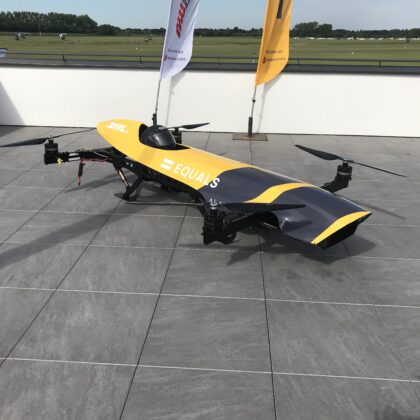Understanding Mental Workload in UAV Operators: The Role of Eye-Tracking Technology
The Aeronautical Journal March 2025 Vol 129 No 1333
As unmanned aerial systems (UAS) become increasingly central to military and civilian operations, ensuring that their operators maintain optimal mental performance is critical. The systematic review presented in The Aeronautical Journal explores how eye-tracking technology is revolutionizing our ability to assess and manage the mental workload of UAS operators.
Operators of unmanned aerial vehicles (UAVs) face intense cognitive demands, requiring them to process large volumes of data, monitor multiple screens, and make high-stakes decisions in real time. Traditional methods, such as self-assessment questionnaires, often fall short in providing objective, real-time insights into their mental state. This is where eye-tracking technology offers a breakthrough.
By analyzing gaze patterns, pupil dilation, and blink rates, researchers can determine moments of high cognitive load, pinpointing when operators are at risk of overload or distraction. The study reviewed 26 key publications, demonstrating how eye-tracking not only monitors workload levels but also helps design better human-machine interfaces that dynamically adjust to operators’ needs.

Source: Own authorship.
The Figure 1 showcases a UAV operator in a flight simulator, equipped with an eye-tracking device. This cutting-edge technology captures gaze patterns and attention shifts, providing real-time insights into cognitive load and situational awareness. By integrating eye-tracking into UAV training and operations, researchers and engineers can optimize interface designs, ensuring that operators remain focused, alert, and efficient.
The findings suggest that real-time workload monitoring through eye-tracking could enhance both safety and efficiency in UAV operations. Implementing adaptive interfaces that respond to cognitive load could reduce errors, improve performance, and ensure that UAV operators remain fully engaged throughout missions. As automation in aviation expands, leveraging eye-tracking insights will be key to maintaining operator effectiveness, ultimately leading to safer and more efficient UAS missions.
The paper Eye-tracking analysis to assess the mental load of unmanned aerial system operators: systematic review and future directions by A.C. Russo, M.M. Cardoso Junior and E. Villani appears in Volume 129 Issue 1333 of The Aeronautical Journal and is freely available for one month.

The Aeronautical Journal has, for over a century, been the UK’s leading scientific and technical aeronautics Journal and is the world’s oldest Aerospace Journal that remains in production. Published monthly, The Aeronautical Journal draws upon the expertise and resources of The Royal Aeronautical Society providing a world-wide forum for authors from the UK and overseas. Research papers are solicited on all aspects of research, design and development, construction and operation of aircraft and space vehicles. Papers are also welcomed which review, comprehensively, the results of recent research developments in any of the above topics.
The Royal Aeronautical Society is the world’s only professional body dedicated to the entire aerospace community. Established in 1866 to further the art, science and engineering of aeronautics, the Society has been at the forefront of developments ever since.
www.aerosociety.com | National Aerospace Library catalogue & e-books
Book reviews covering academic, scientific and technical books covering aeronautical engineering and topics relating to it can be found here: www.aerosociety.com/news-expertise/national-aerospace-library/book-reviews






